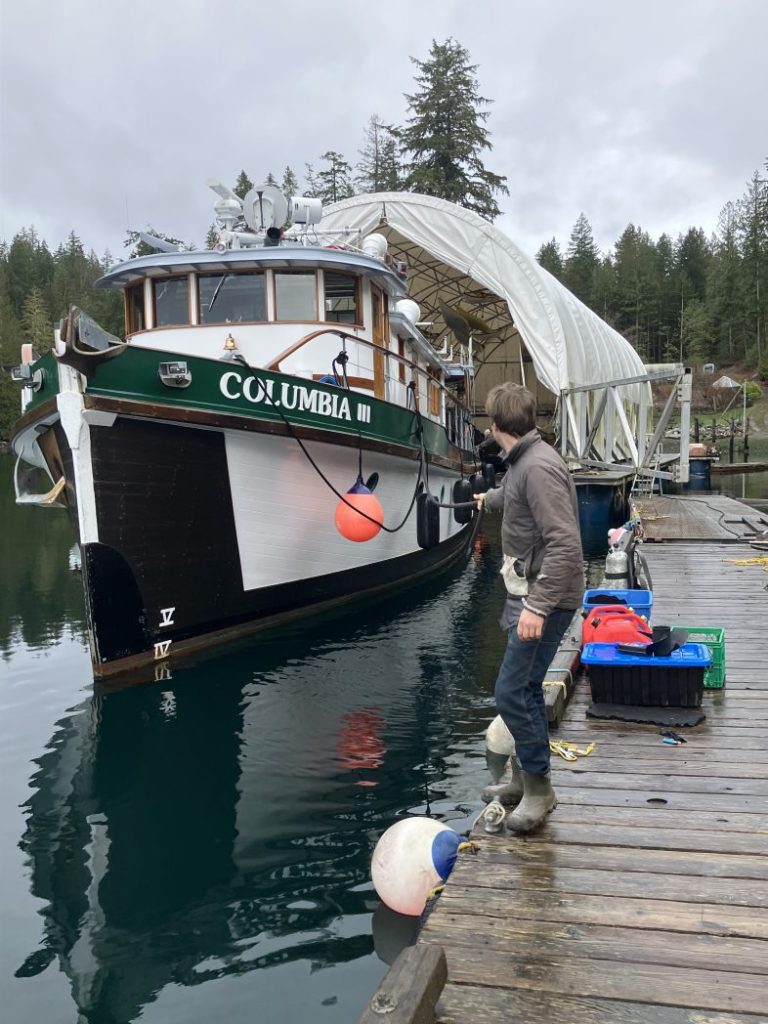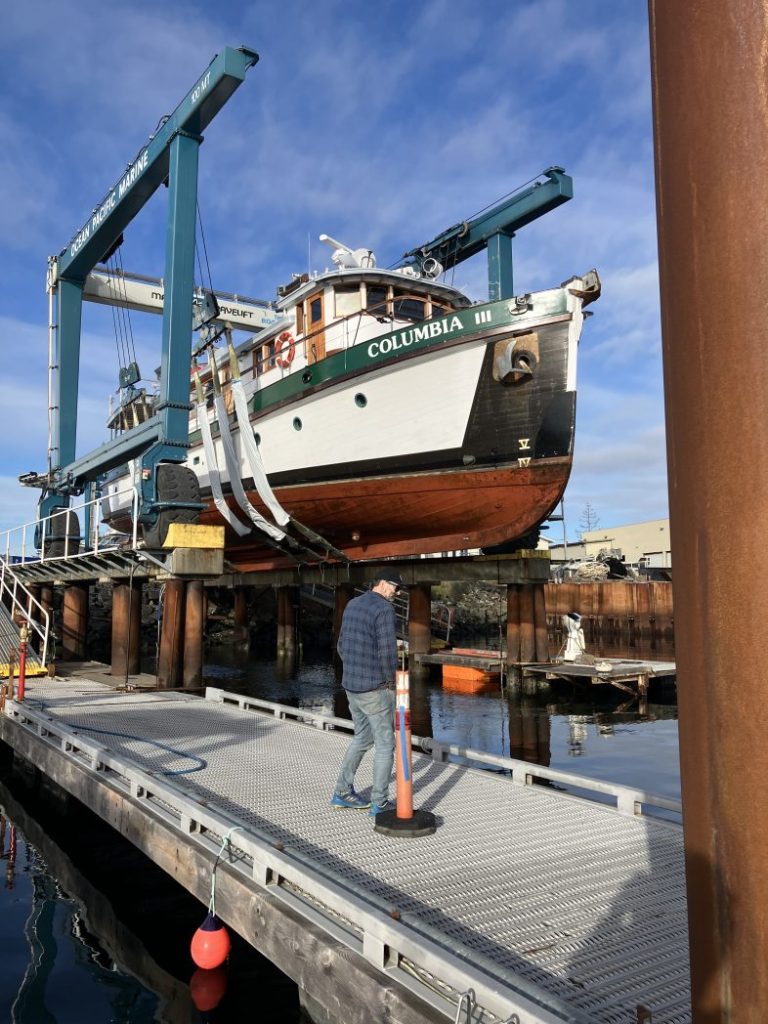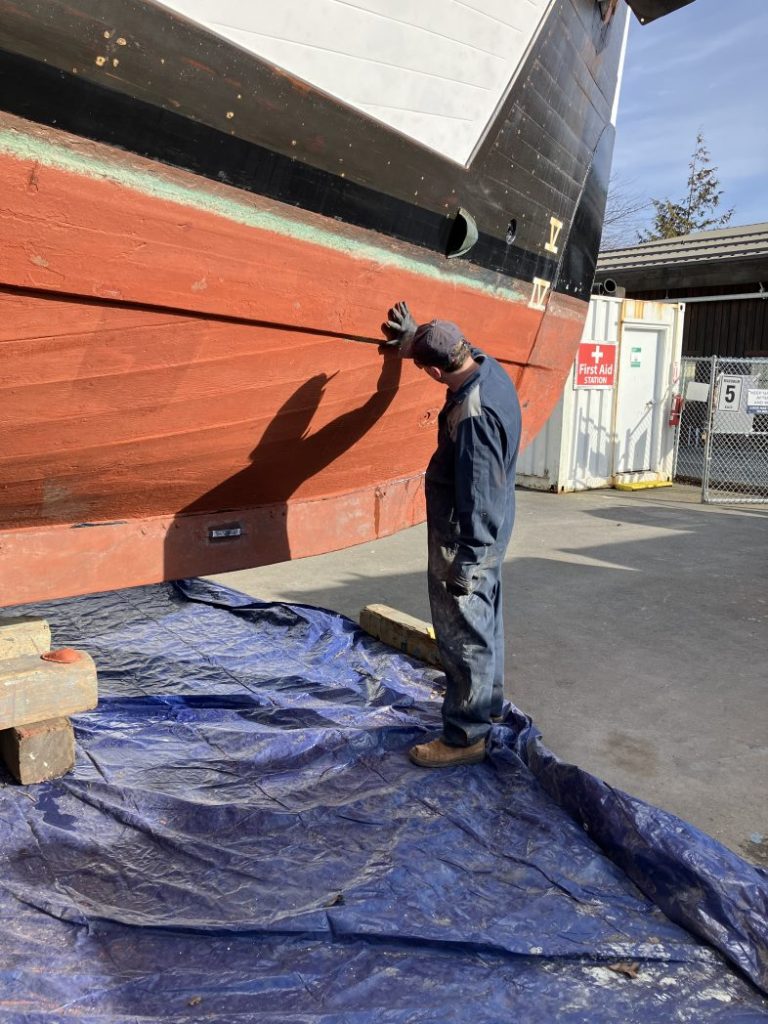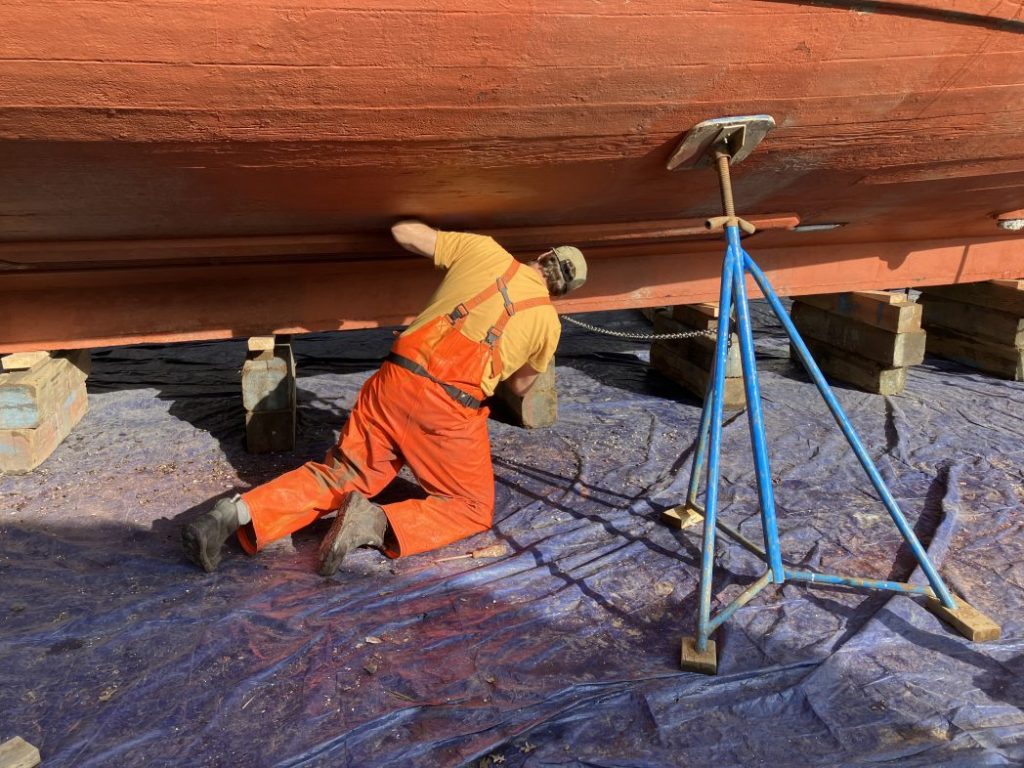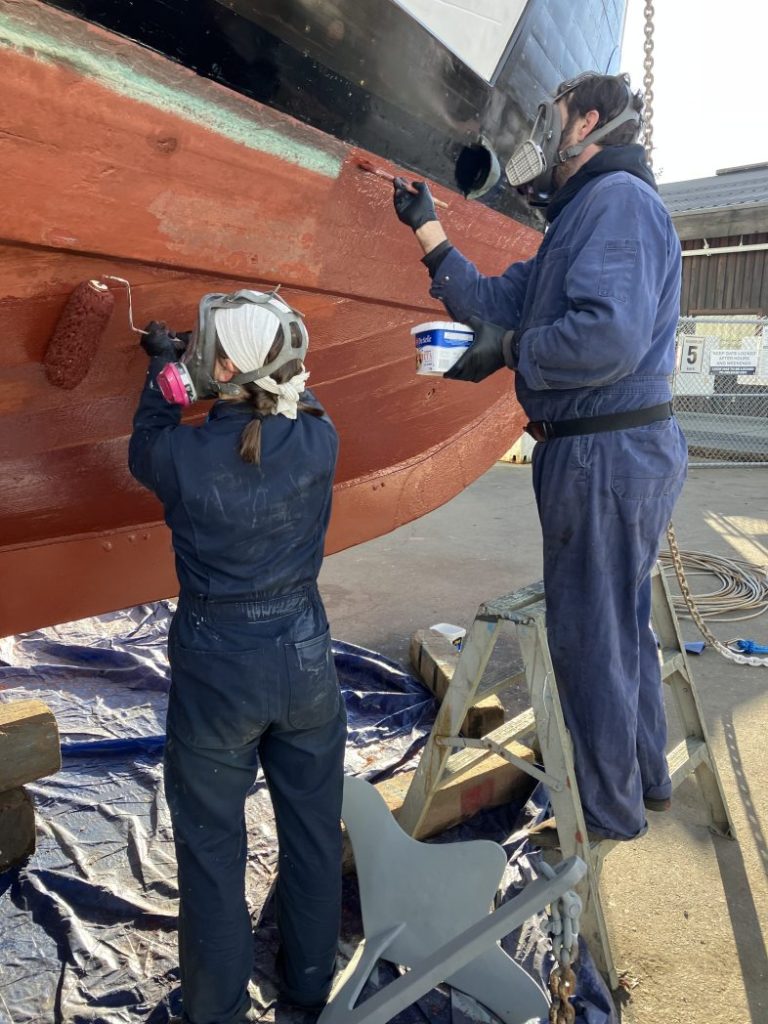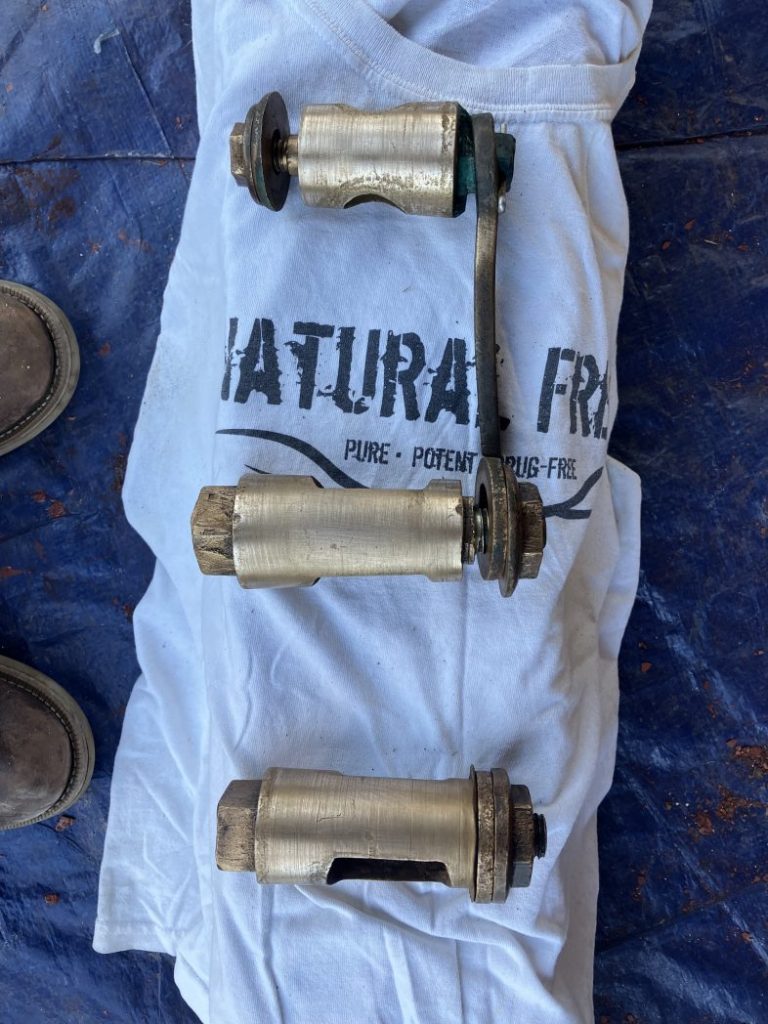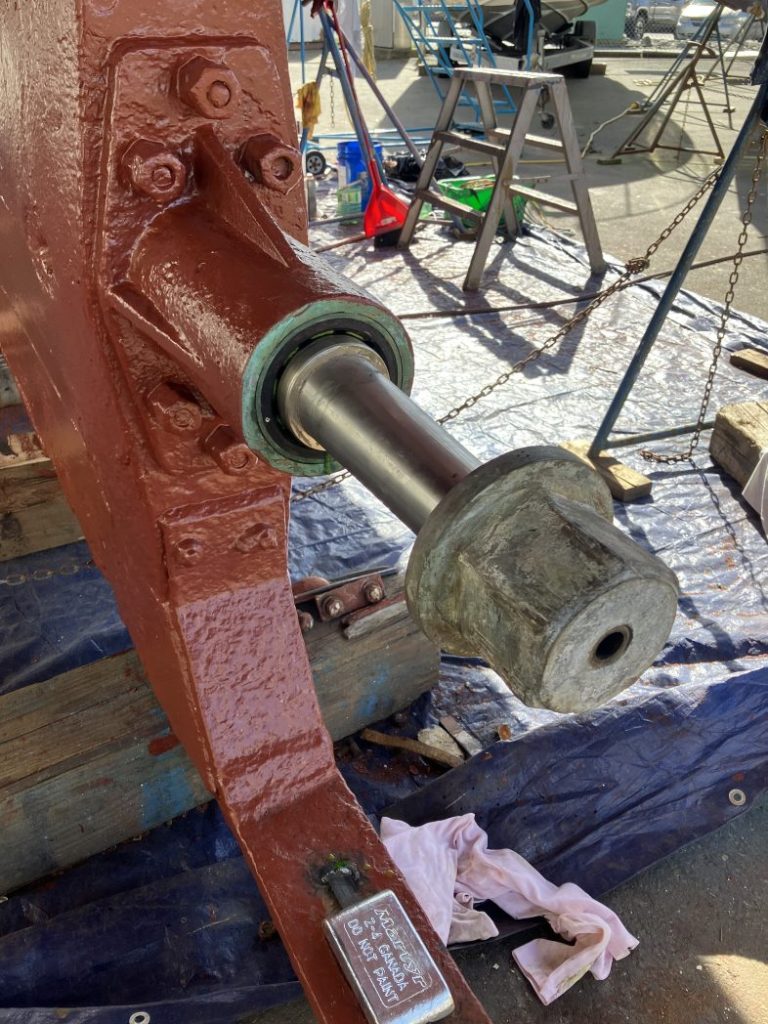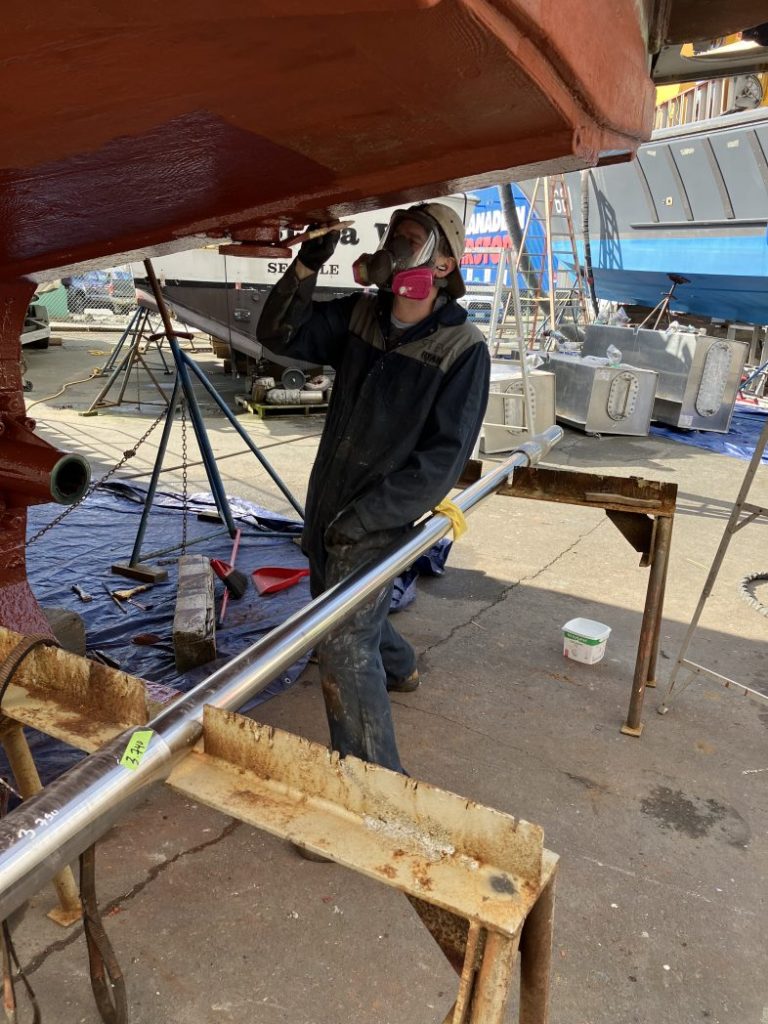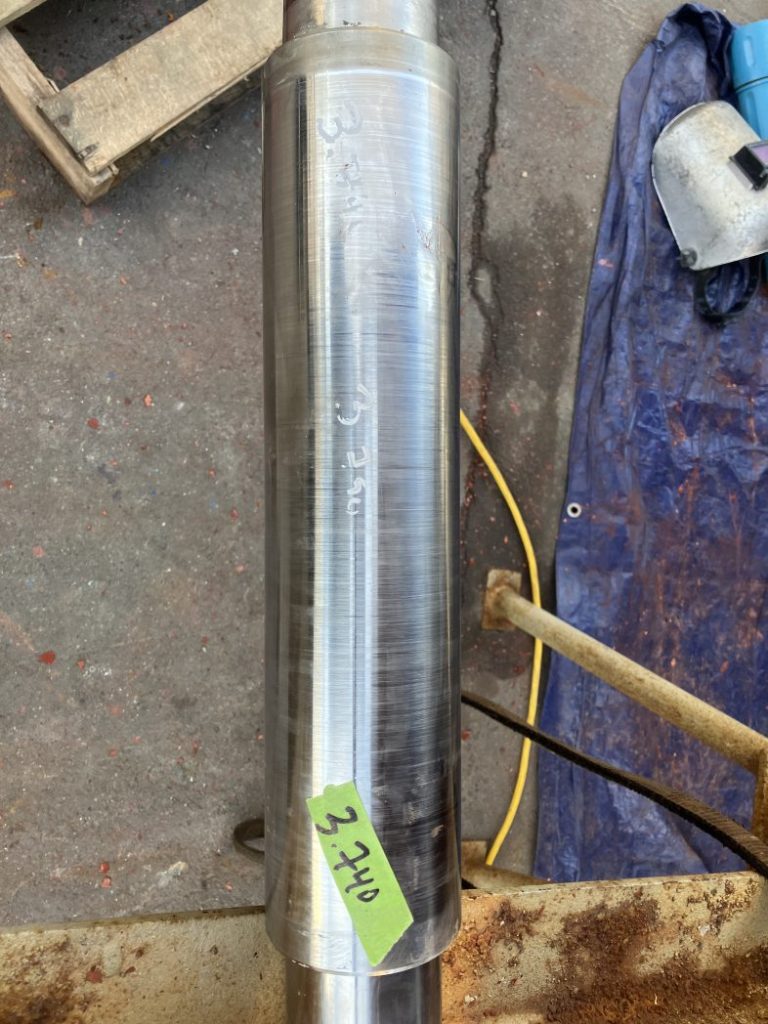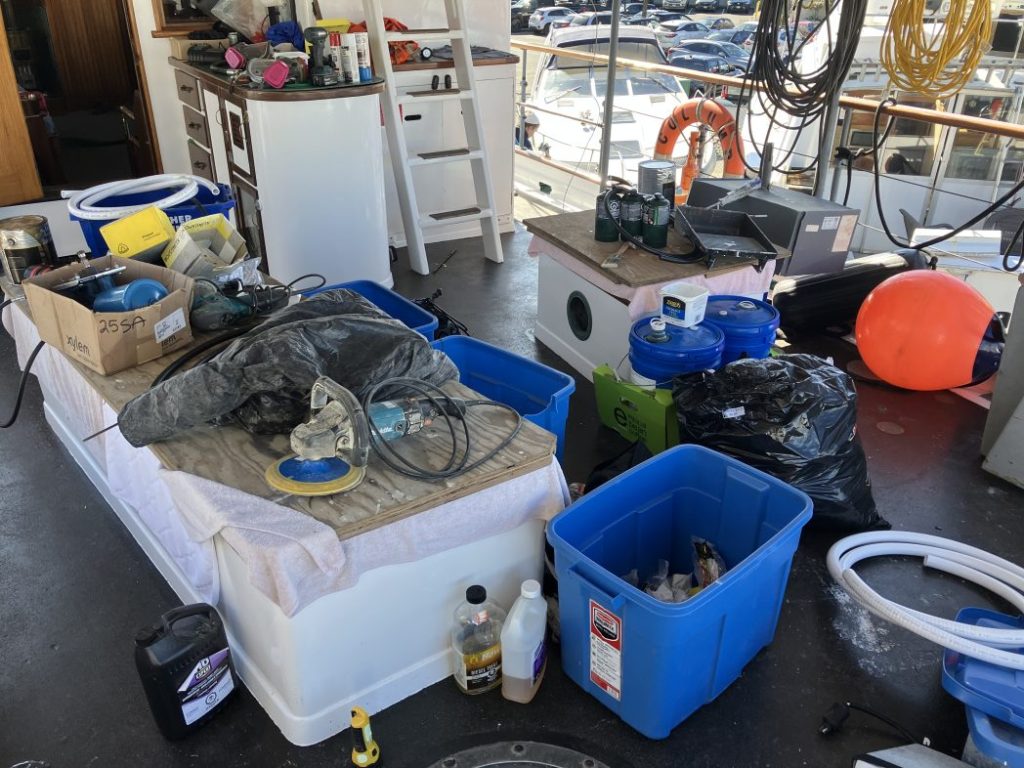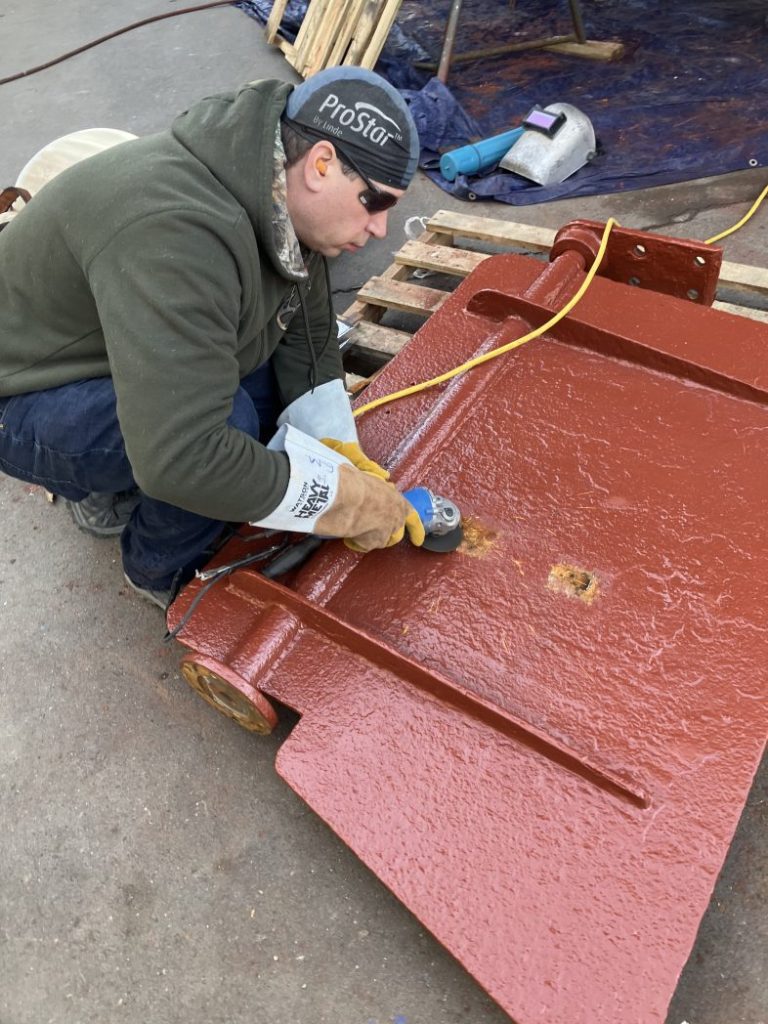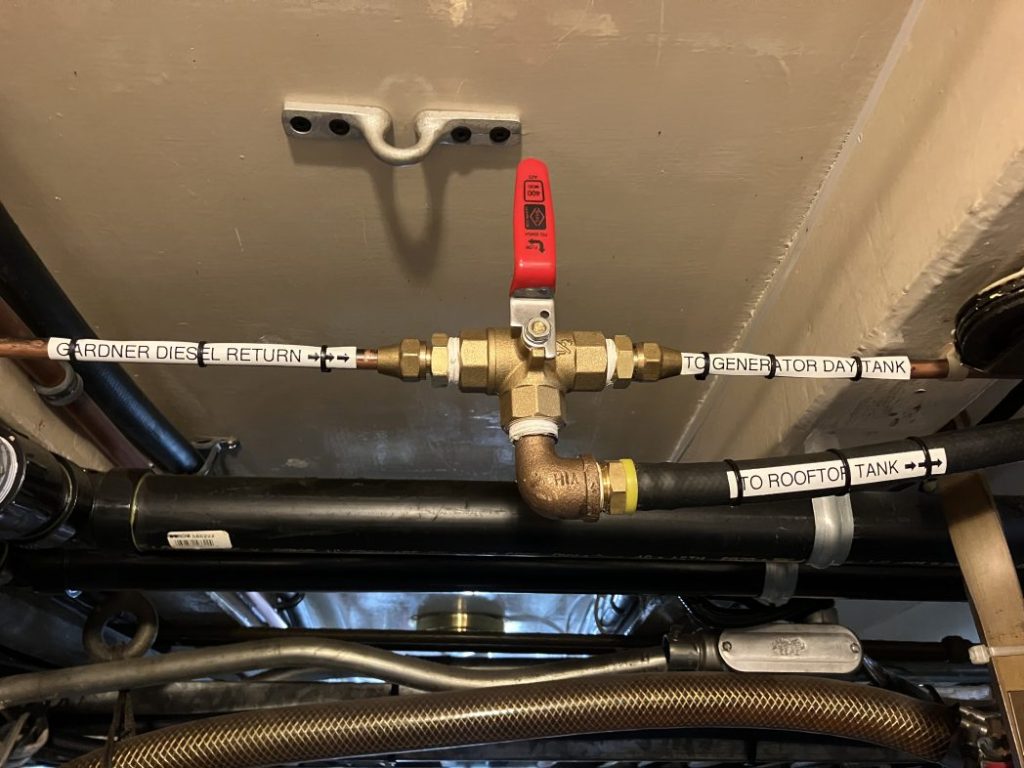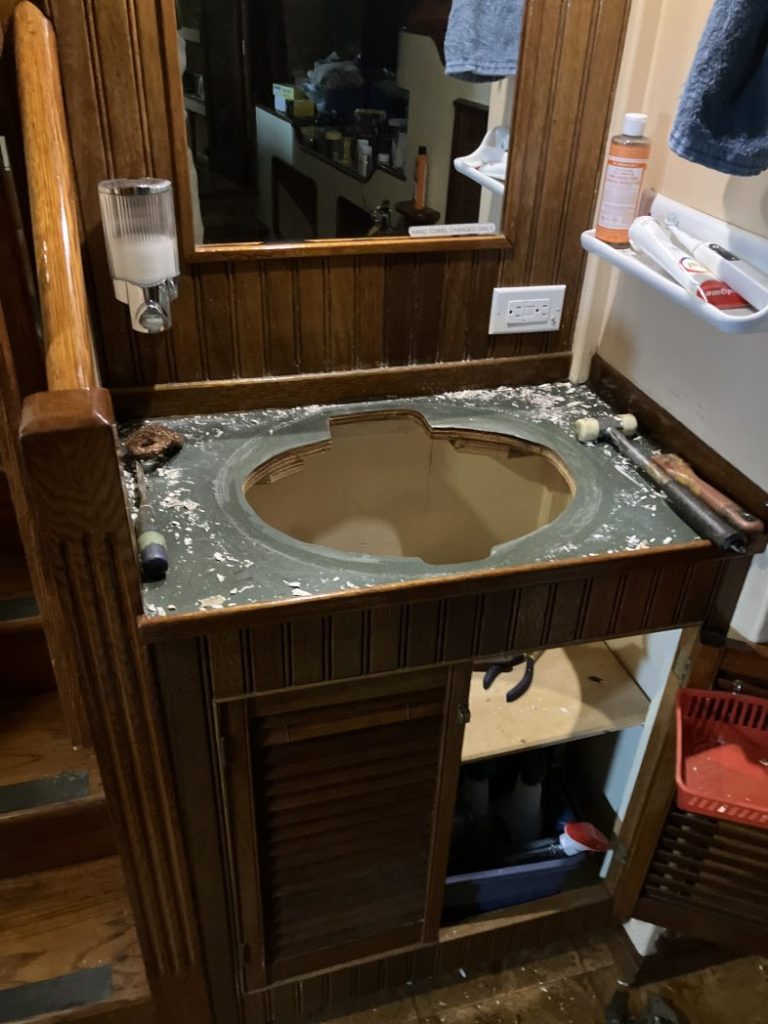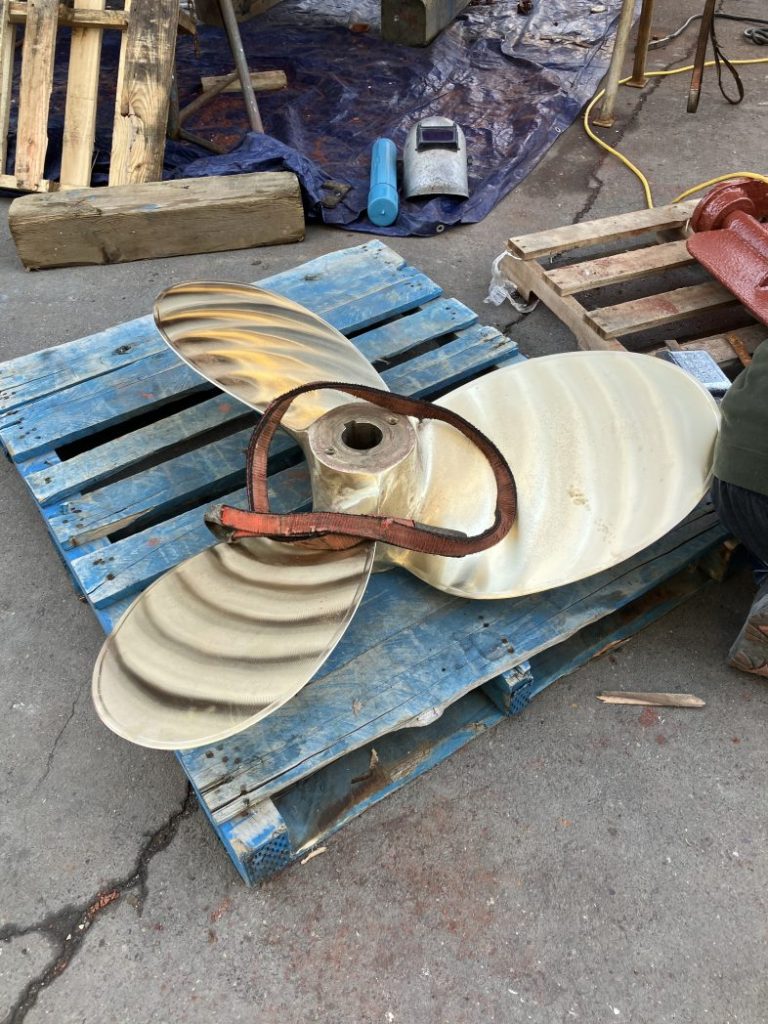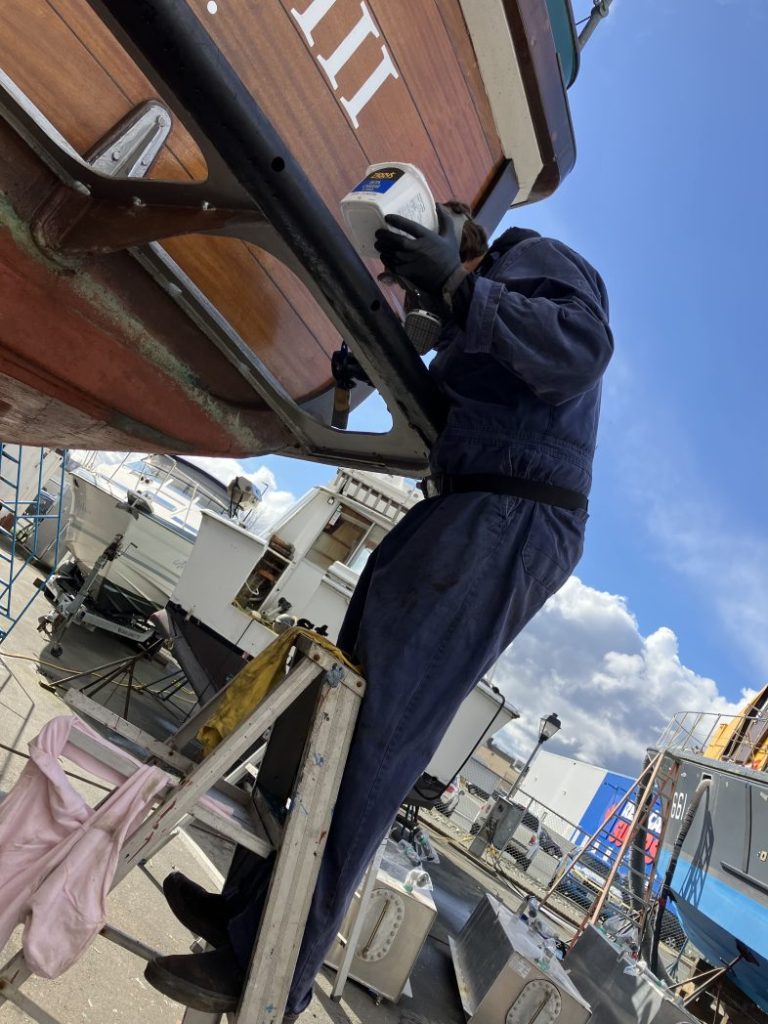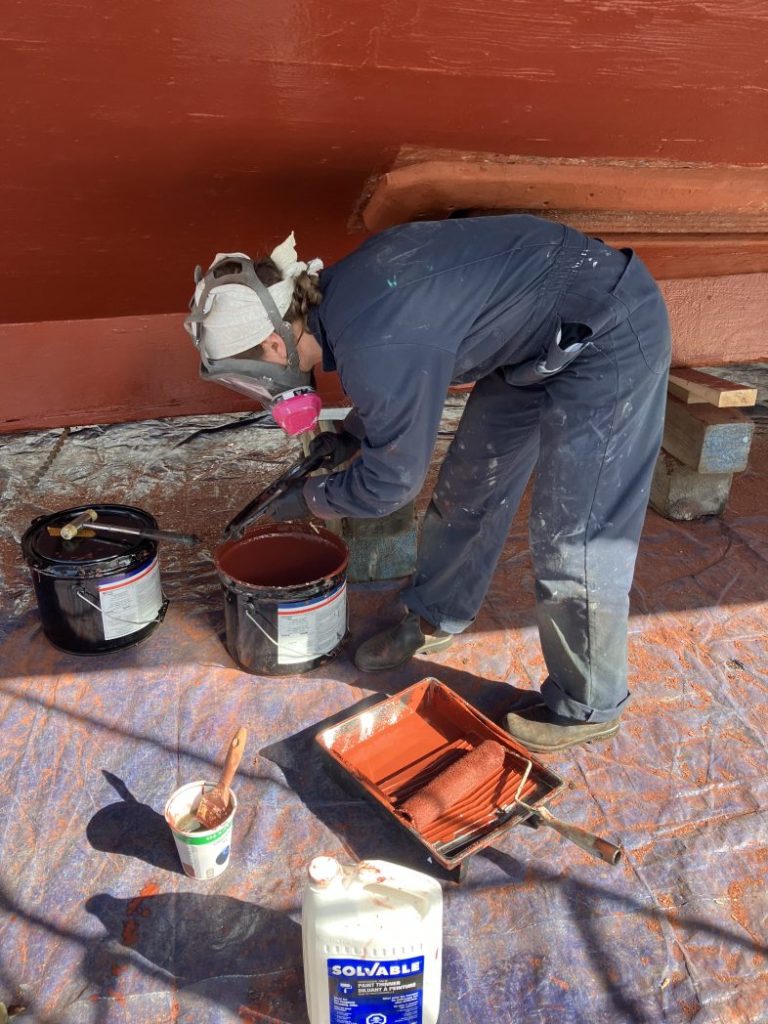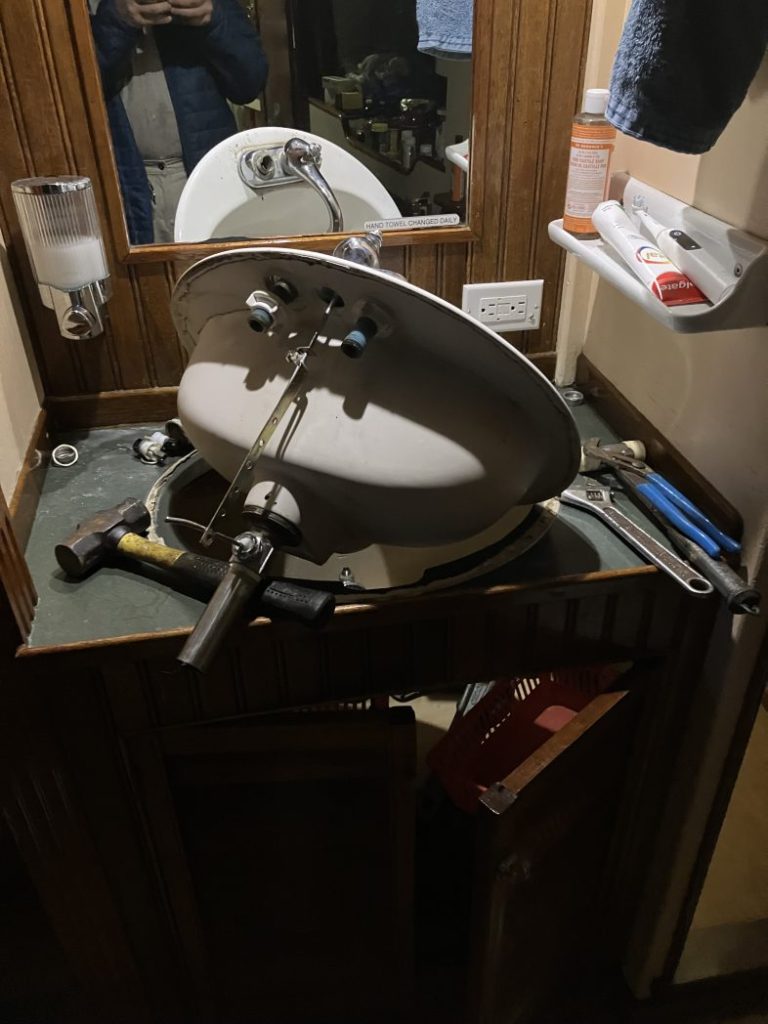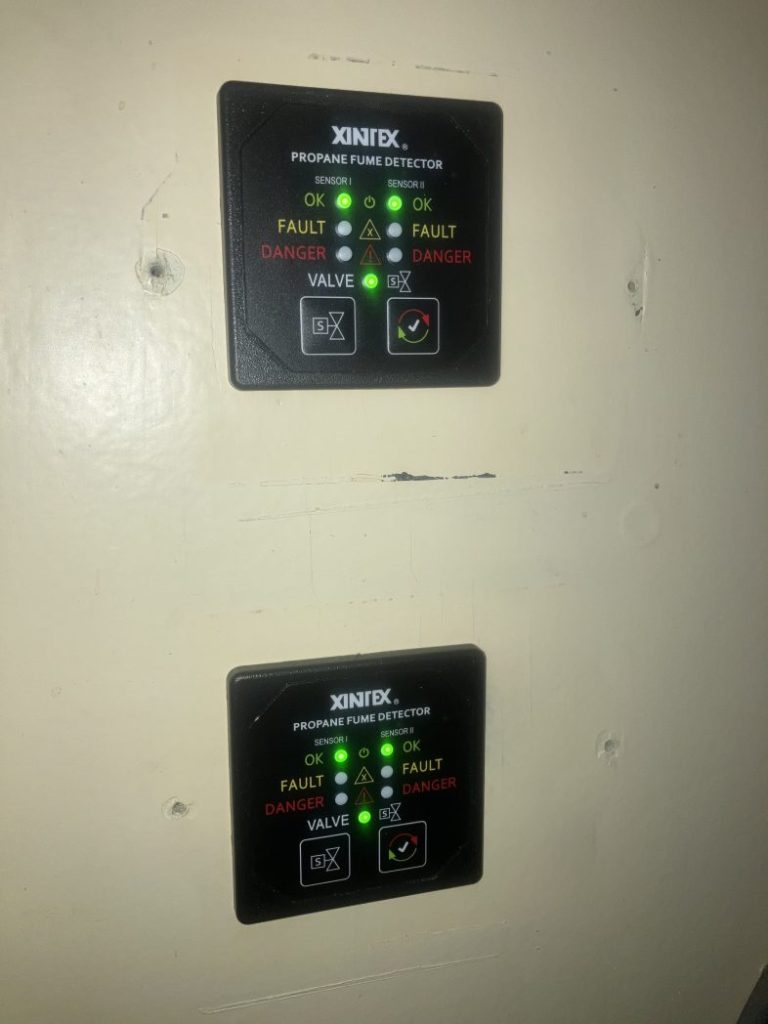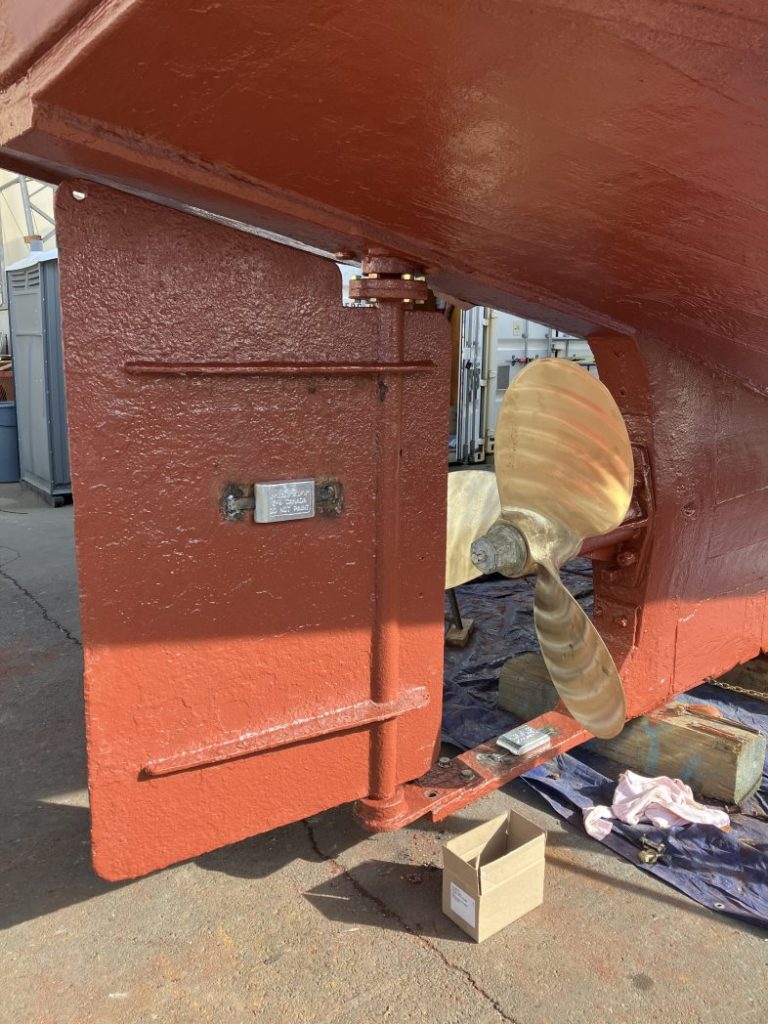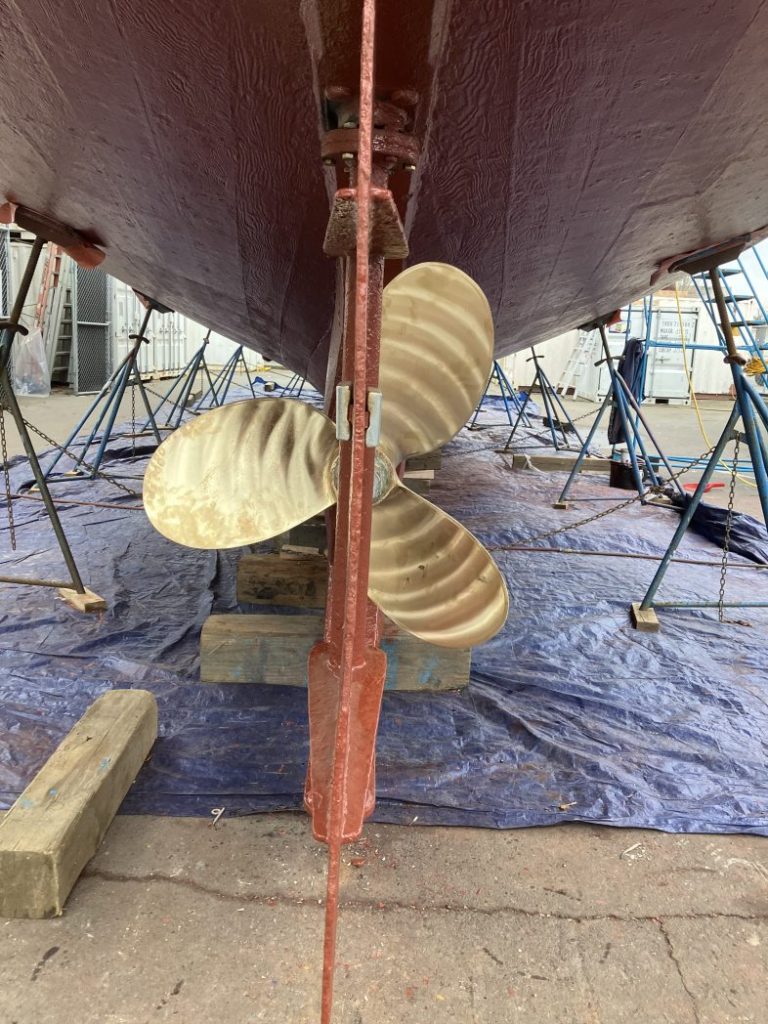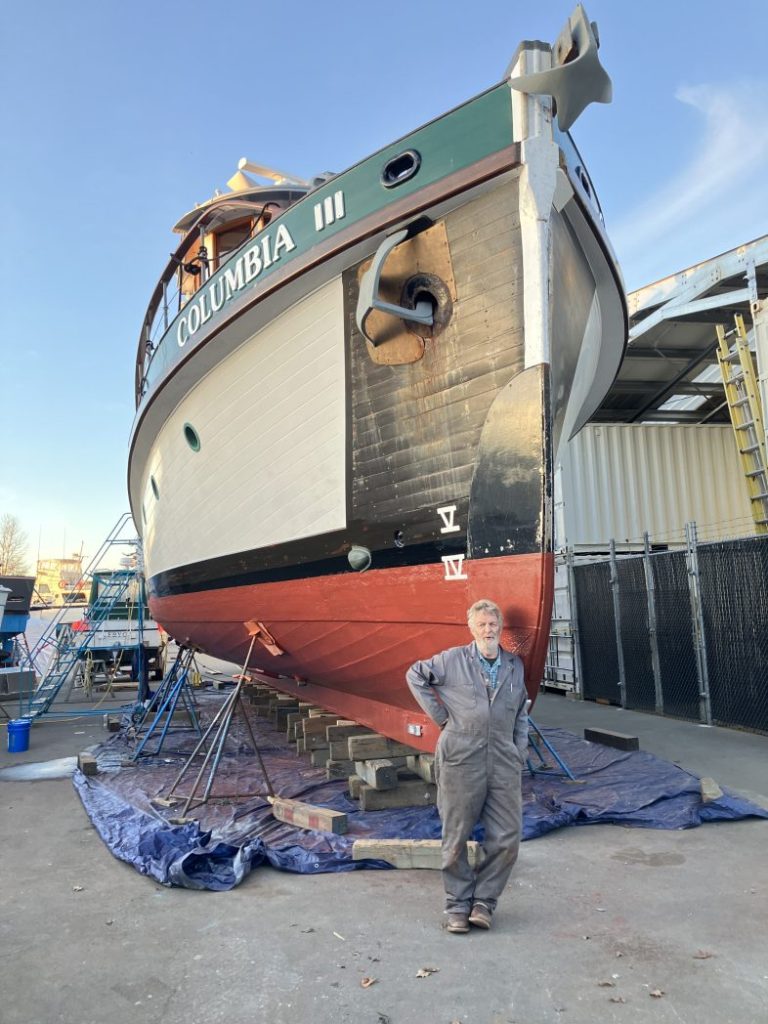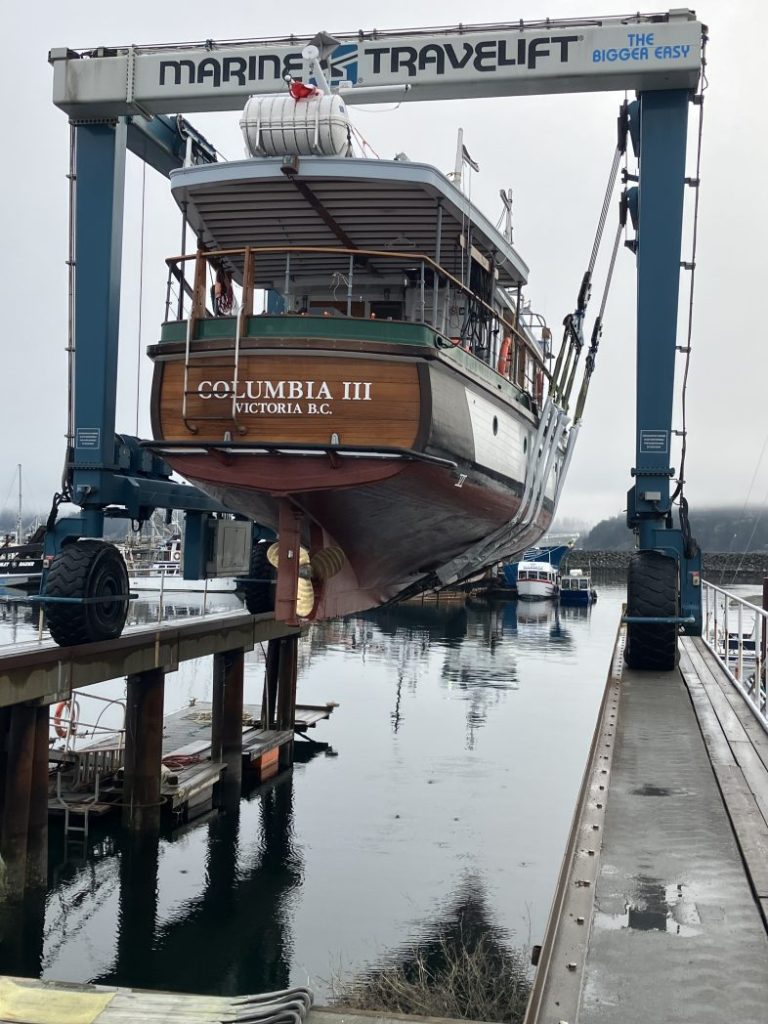Writing this blog has been a pretty simple task for me over the years.
I do “stuff” on the boat, and I have lots of help doing “stuff” on the boat, and I take pictures and cast light into some of the dark corners of wooden boat maintenance and the operations of a very small family business. Most of it is a bit boring, but I love my life enough to take a certain pleasure in sharing the gritty minutia of running the COLUMBIA III . . .
So why am I hesitant? Well, we had a problem at the end of our 2024 season and we lost 12 days of our season due to a mechanical failure with our ship’s anchor winch, and I am not proud of it . . well, I was embarrassed and completely stressed actually . . . So is this blog worthy? How many companies hang their maintenance woes on their website? Am I an idiot?
But this is more about a wooden ship maintenance blog than it is a marketing ploy, so I will let veracity rule the day.
So. . . . on the 8th day of our second last 10 day tour of the year, the ship was anchored for the night. It was a good anchorage for the Great Bear Rainforest; very protected from any form of sea swell or wave action, but nowhere in the GBR are you exempt from wind if there is a storm brewing offshore. When the ship is anchored, she acts a bit like a dog tethered on a chain; she tends to swing strongly from left to right as the wind catches her bow. Eventually, the anchor chain pulls tight and swings the bow back the other way. The ship spends her night sawing back and forth on her anchor tether. The COLUMBIA III can actually track several nautical miles in a single night within an anchor circle only 400 feet in diameter!
The anchor held for the night and the guests slept nicely despite the wind gusts up to 55 knots. But the skipper certainly didn’t sleep well! He was up the whole night monitoring the navigation computer to ensure the anchor was not dragging and keeping an ear alert for any potential problems that might come up as the wind howled around the ship. By morning, the computer had recorded a very active indication of how much the ship had travelled back and forth on her “tether”. She had traversed several miles whilst staying inside her anchor boundary circle. At one point during the night, the Skipper had chosen to let more anchor cable out to ensure the anchor didn’t break free from its hold on the seafloor. Here is a photo of the ship’s navigation computer after the stormy night. You can see on the right that it’s still blowing 20 Knots, but the barometer has started to climb after the storm’s passage.

As the wind velocity eased at daybreak and breakfast was being served to the comfortable guests, the skipper went to pull the anchor in before travelling to the next paddling destination . . . . but nothing happened. The hydraulic pump was on, the winch drum valve was activated, but the winch drum didn’t turn, and the cable and chain didn’t wind back onto the winch drum like it has done reliably for 66 years! Oh, oh!
I was contacted immediately by satellite comms and frantic (calm, orderly, methodical) troubleshooting began. We do carry a large complement of spare parts on the ship, and the first task was to replace any part that was readily available. As we were uncertain what the problem was, we just started changing parts. All this seems easy, except the ship had guests waiting to begin their 8th day of the tour . . . paddling? wildlife viewing? what’s on the day’s itinerary??
First, the crew had to devise a novel way of retrieving the anchor . . . and creative use of the electric kayak hoists allowed the crew to get the anchor back on board. They ran for a couple of hours to the next paddling starting point and launched the guests. This kept the guests happy (and ignorant in a nice, polite way) and created some space for the Skipper to change parts and talk to me back at the “maintenance command center.” So Jonas changed the hydraulic pump mounted on the big Gardner main engine (which is no small feat), but that didn’t fix the problem. And there was the weather forecast. The last two days of the tour were predicted to be very stormy, and we had to make a decision. Often, decisions like this are easy to make, sort of. Several days of storms were predicted, there were only two days left in the tour and being unable to retrieve our anchor was a serious degradation of the ship’s primary safety equipment.
And there was the weather forecast. The last two days of the tour were predicted to be very stormy, and we had to make a decision. Often, decisions like this are easy to make, sort of. Several days of storms were predicted, there were only two days left in the tour and being unable to retrieve our anchor was a serious degradation of the ship’s primary safety equipment.
It was clear what the right choice was: return to harbour asap, get the guests off the ship and into the hotel at Shearwater and deep dive into trying to fix the winch . . . . . The crews only had one little detail to attend to…. break the bad news to our guests. But Jonas and his crew agreed that we had to end the tour and get the guests back to harbour and a dock to tie safely to. So Jonas put his shoulder to the wheel and spoke to the group. A contributing factor was that many of my guests were repeat clients, and this group had joined me many times. Mary, the group leader, had joined us 7 times! They knew this was exceptional, and all the guests were disappointed and completely understanding.
God bless reasonable humans!!!
Whilst the ship’s crew were trying to keep the guests informed and comfortable, I raced to Campbell River to source more parts: hoses, valve assembly, new hydraulic motor . .. (the hydraulic shop gave me one of everything and said,” GO! I hope this helps! Bring back what you don’t need.” He didn’t even take any money. He said, “Just get to the airport!” So I jumped on the first available plane to Bella Bella and met the ship in Shearwater.
Jonas and I immediately started changing all the parts I brought, valve assembly, hoses, and hydraulic motor. Of course, being Bella Bella in late September, it was raining. Good weather for spawning salmon and bear viewing, sub-optimal for monkey-wrenching on the front deck of the COLUMBIA III in the dark. At least it was only blowing 25kts SE . . . The crews had prepared the front deck with a jury-rigged tarp to make the work a little easier. I even installed a new pressure gauge to determine if the pump was actually producing pressure or not . . .

After several hours of disassembly and reassembly, we started the main engine and tried the winch again. Nothing! No turny the winch drummy thingy!!. So we had changed everything that we could and there was only the winch itself. I didn’t want to dig into the guts of the winch as I knew I would not be able to repair it in a hurry.


But we had no options left, and I pulled the gear case off the winch and peeked into the inner workings of the winch, and it was instantly obvious; the drive gear had failed, and broken gear bits fell into my hand. . .

That was all I needed. The winch was broken, and nothing would save our last tour of the season. It was unequivocal, which was a blessing of sorts. No more heroics or potential heroics. Everyone wanted to save the last tour, and everyone had cool ideas like stealing an anchor winch off the boat next door and working 36 straight hours while we sent the incoming guests out sports fishing as a diversion . . . but no, it was really simple; the 2024 season just ended with the sight of those broken gear teeth.
This was a really big deal for my small company! 20 seasons with about 18 tours a year . . . 360 successful tours . . and our first cancelled tour. Our first tour in 20 years where we had let our guests down. It was late at night, Jonas and I were wet and tired, and we had tried everything we could, and I walked back inside the COLUMBIA III and broke the news to the rest of the crew . . . I was crying. They were crying. This is our life! Our mission! We work so hard to have a smooth season . . . and we were up against something we just couldn’t fix in a hurry.
A very fortunate feature of this whole mess was our long relationship with our repeat guests. The last tour was a charter group that were coming for their third charter with us. They trusted us, and they knew that this was a completely unusual circumstance, and they pivoted very, very quickly to a different itinerary for their group from Britain. With their assistance, the last group of the year ended up with a successful wilderness tour to Canada. . . . it just wasn’t on the COLUMBIA III as planned.
The storms had hit the central coast as predicted and I waited with the ship in Bella Bella until I could catch a flight home. The guests from the tour that was cut short 2 days were still in Bella Bella as well, waiting for a break in the weather, and as Mary knew me well after 10 years of chartering the COLUMBIA III, we all went for breakfast at the Shearwater Resort. I was super apologetic and seriously had my tail between my legs… but everyone was supportive and understanding and even appreciative. They knew this was non-standard for Mothership Adventures! and they knew we tried . . .
A couple of days later, I flew out of Bella Bella, and Jonas and crew brought the ship south around Cape Caution to Campbell River, where I was waiting for them. I spent a day or two in town doing post-season chores like laundering all the pillows and quilts and finally ran the ship home alone. On a side note, I often thank my guests for paying a substantial amount for our tours, but that money goes to maintaining the ship well and for paying the crews well. On that vein, I did pay the Mothership crews full wages for the 10 days they lost. It wasn’t their fault, and they shouldn’t be financially penalized.
Phew! That was fun . . . .
Once the ship was finally home, I was able to start digging into the “issue”. I was pretty worried that the damaged gear would be hard to source and perhaps I would be looking at a custom cut gear or, as a worst-case scenario, I might have to replace the whole winch assembly . . . (Now that didn’t sound fun!)
As a first step, I took the bearing carrier to my machinist in Campbell River and asked him if he could make me a new gear . . . . But gear cutting is a specialty process beyond the resources in my small town of Campbell River. But “Look here,” the machinist said, pointing to the steel worm gear, “There is a part number and a manufacturer’s name on this gear! Try a Google search”. And yes, there was writing stamped on the gear that I had not noticed.
So after a few days of internet searching and phoning I finally found the right person. I love it when I call a large corporation in the States somewhere that caters to giant military contracts (according to their website), and when a female voice answers. I make the sexist mistake of asking to talk to a technician, and she says, “What do you need to know?” I embarrassingly found that she knows EVERYTHING about gears, and her company still produces the gears I needed in matched pairs, and she can ship them to me within a week!
WOW!!! 66 years later, the same company is making the same gears with the same part numbers, and they can ship them to me !!!! I did not expect that. PHEW!!!!
So the new gears finally arrived . . .  and I took the “gear case” back to the machinist. As the old saying goes, “In for a penny, in for a pound.” So I asked the machinist to replace the 3 bearings, make a new shaft for the gears to run on as the old one was worn, and mount the new gears.
and I took the “gear case” back to the machinist. As the old saying goes, “In for a penny, in for a pound.” So I asked the machinist to replace the 3 bearings, make a new shaft for the gears to run on as the old one was worn, and mount the new gears.
Then Christmas came and went, and I had a big note in my kitchen, “Get winch running by Jan 15.” I was still concerned that I might find more problems with the reassembly, and I wanted lots of time to correct any new wrinkles well before our season started.
A brief extra note here. I asked my 90-year-old Skipper why the gear that broke was bronze, and he replied, “Of course the gear is bronze! There is a lot of side-loading force on the worm gear, and if both gears were steel, they would overheat under load and cause the mating gear surfaces to pit and destroy themselves.” . . . Right, of course, I should have known that. And it also helps to understand that the system was designed with one gear weaker than all the others. And that’s the one that failed after 68 years.
So I spent a few days cleaning the winch base, which holds an oil bath for the gears to run in, assembled the new hydraulic motor to the gear case, tidied up the new valve assembly’s installation (as Jonas and I had been rushing on the earlier attempt to troubleshoot the winch), and finally fired up the main engine and tested the winch. Weird, it worked !!!!.
No big deal really . . . just a $120,000 loss for my little company. . . But all guests were safe, the crews were safe, and the ship was safely home. All things considered, just a minor hiccup!
And last but not least, I’ll let one of the affected guests speak for themselves . . . .
“Hi Ross, It is good to hear the Columbia is home and ready to rest for the winter, even if your work continues! Your kindness is most appreciated. Bob and I want you to know what a glorious trip we had, despite the troubles. We had a whale day that is unlikely rivaled by anyone at anytime in the past or future! That will always be a day we will cherish. When trouble presented itself, your crew was calm, resourceful, professional and worked privately as a team to problem-solve and get the show back on the road! We, as guests, were unaware there was a problem for a very long time. We can’t give enough credit to them for the way they handled the situation. Captain Jonas was an excellent leader and gave credit to others for the recovery efforts. We can’t thank them and you enough for another incredible tour aboard the Colombia. This was Teri’s 5th trip aboard and Bob’s 4th. We truly appreciate the very special history of the boat and the Mothership family.
We understand that stuff happens, and frankly, think it was best that we were the group aboard when it did. We have had many great adventures with your company and know that this was yet another very special experience! Bob and I would also be happy to take our refund [for the two lost days] as a credit for a future trip aboard.
Thanks again for another wonderful adventure in such a special place with the best adventure company! All our best, Teri & Bob, Idaho”
So where was I? Oh yes, the COLUMBIA III and regular winter maintenance . . . ordering new life jackets, re-certifying crew first aid, sourcing new green leather and organizing repairs to the luxurious tufted leather seat in the wheelhouse, installing isolation valving on the hydraulic system, replumbing the salon fireplace fuel lines, 100 pounds of coffee, overhauling 3 raw water pumps for the generators, kayak sponges that took 6 months to arrive, all new shampoo and soap dispensers . . . and writing a blog . . ..








PS: Now don’t tell anyone that you read this secret blog entry . . . .Ross
